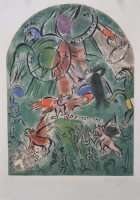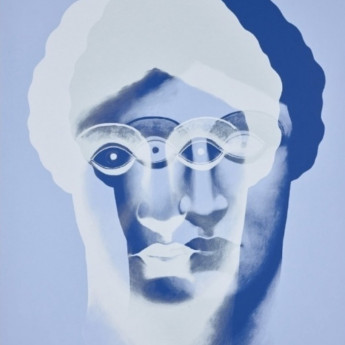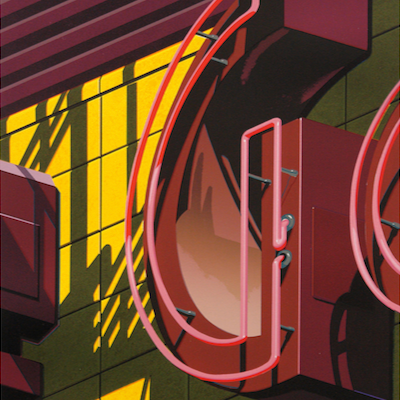
Details
Artist
Styles
Etching and aquatint in colors on Japon nacré - Stamped signature, and hand-numbered in pencil // René Magritte's L'Art de Vivre (1968) is a limited edition etching and aquatint, exemplifying his surrealist approach. The artwork portrays a figure in a suit with a large, moon-like head, set against a landscape of mountains and a cloudy sky. This surreal composition invites viewers to contemplate the bizarre and the ordinary, a hallmark of Magritte’s work where objects and contexts are juxtaposed to challenge our perception of reality. The print, created on Japon nacré paper, is stamped with the artist’s signature and hand-numbered in pencil, limited to an edition of 150.
L'Art de Vivre, 1968
form
Medium
Size
27.3 x 21.6 cm
- Inches
- Centimeters
Edition
Price
Details
Artist
Styles
Etching and aquatint in colors on Japon nacré - Stamped signature, and hand-numbered in pencil // René Magritte's L'Art de Vivre (1968) is a limited edition etching and aquatint, exemplifying his surrealist approach. The artwork portrays a figure in a suit with a large, moon-like head, set against a landscape of mountains and a cloudy sky. This surreal composition invites viewers to contemplate the bizarre and the ordinary, a hallmark of Magritte’s work where objects and contexts are juxtaposed to challenge our perception of reality. The print, created on Japon nacré paper, is stamped with the artist’s signature and hand-numbered in pencil, limited to an edition of 150.
What is Hyper-realism?
Hyperrealism is a genre of sculpture and painting that closely resembles high-resolution photographs. It is an evolution of Photorealism and is often applied to an independent art style or movement that became prominent in Europe and the United States in the early 2000s. Hyperrealist artists focus on extreme detail and precision, creating works that are often indistinguishable from real-life images.









